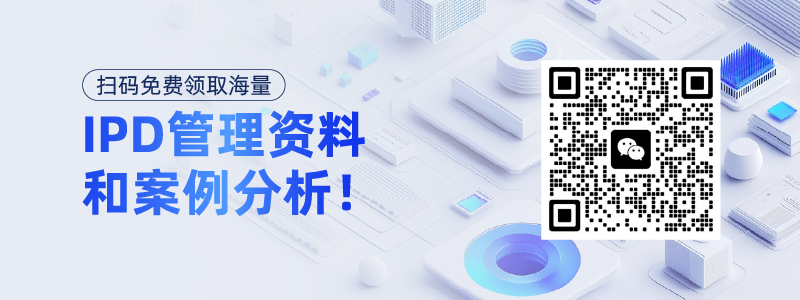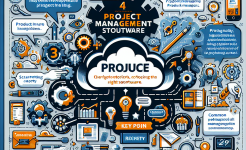In the contemporary era, technological advancements are occurring at an unprecedented pace. New technologies such as artificial intelligence, 5G, and blockchain are emerging continuously, disrupting traditional industries and creating new business opportunities. For companies, keeping up with rapid technology iteration is not just a matter of competitiveness but also survival. The Integrated Product Development (IPD) R&D management system has proven to be an effective approach in helping enterprises navigate through this complex and fast - changing technological landscape.
IPD is a comprehensive product development framework that integrates various functions within an organization, including marketing, R&D, manufacturing, and sales. It emphasizes cross - functional teamwork, early market and customer involvement, and a structured development process. By adopting IPD, companies can enhance their product development efficiency, improve product quality, and ultimately respond more effectively to the challenges posed by rapid technology iteration.
Understanding the Characteristics of Rapid Technology Iteration
Rapid technology iteration is characterized by several key features. Firstly, the pace of innovation has accelerated significantly. In the past, it might have taken decades for a major technological breakthrough to occur. However, today, new technologies can emerge and mature within a few years or even months. For example, the development of mobile communication technology has evolved from 2G to 5G in just over two decades, with each generation bringing about revolutionary changes in data transfer speeds, network capacity, and application scenarios.
Secondly, the complexity of technologies has increased. Modern technologies often involve multiple disciplines and fields, such as the combination of software, hardware, and artificial intelligence in smart devices. This complexity requires companies to have a broader range of technical expertise and the ability to integrate different technologies seamlessly.
Finally, the impact of technology iteration on market demand is profound. New technologies can create entirely new market demands or quickly render existing products obsolete. For instance, the rise of e - commerce has transformed the retail industry, leading to the decline of traditional brick - and - mortar stores and the emergence of new business models like online marketplaces and direct - to - consumer brands.
The Role of IPD in Responding to Rapid Technology Iteration
IPD plays a crucial role in enabling companies to cope with rapid technology iteration. One of its main contributions is in promoting cross - functional collaboration. In an IPD framework, marketing teams are involved from the early stages of product development. They can provide valuable insights into market trends and customer needs, which are directly influenced by technological advancements. For example, marketing professionals can identify emerging customer demands for more personalized and intelligent products, which in turn guides R&D teams to develop relevant features using new technologies.
R&D teams, on the other hand, work closely with manufacturing and supply chain teams. This collaboration ensures that new technologies can be effectively translated into manufacturable products. When a new material or component technology emerges, R&D and manufacturing teams can jointly evaluate its feasibility for mass production, taking into account factors such as cost, quality control, and production scalability.
Moreover, IPD emphasizes the use of a structured development process. This process helps companies manage the risks associated with new technologies. By breaking down the product development into distinct phases, such as concept development, system design, and detailed design, companies can conduct thorough reviews and validations at each stage. This reduces the likelihood of costly mistakes and delays when implementing new technologies.
Early Market and Customer Involvement in IPD
Early market and customer involvement is a fundamental aspect of IPD that is particularly relevant in the context of rapid technology iteration. By engaging with customers early on, companies can gain a better understanding of their pain points and unmet needs, which are often shaped by technological changes. For example, in the development of new software applications, customer feedback can reveal areas where existing technologies are falling short, such as slow processing speed or user - unfriendly interfaces.
Market research also helps companies identify emerging trends and potential disruptions. This information is invaluable for R&D teams as they decide which technologies to invest in and how to incorporate them into new products. For instance, market research might indicate a growing demand for sustainable technologies in the automotive industry. Based on this, car manufacturers can focus their R&D efforts on developing electric or hybrid vehicles using advanced battery technologies.

Furthermore, involving customers in the product development process through beta testing and user feedback loops allows companies to refine their products in real - time. This iterative approach ensures that the final product meets or exceeds customer expectations, especially in a market where technology - savvy customers have high demands.
Leveraging Platform Strategies in IPD
Platform strategies are an important part of how IPD copes with rapid technology iteration. A product platform is a set of common components, technologies, and architectures that can be used as a basis for developing multiple products. By building a platform, companies can reduce development time and costs while still being able to incorporate new technologies.
For example, in the smartphone industry, many manufacturers use a common platform for different models. This platform includes the basic hardware components such as the motherboard, processor, and operating system. When a new technology, like a more advanced camera sensor, becomes available, it can be easily integrated into the existing platform, enabling the company to quickly launch new smartphone models with enhanced camera capabilities.
Platform strategies also facilitate technology reuse. Instead of starting from scratch for each new product, companies can build on existing technological achievements. This not only speeds up the development process but also improves product quality and reliability. Additionally, a well - designed platform can be easily upgraded to incorporate future technologies, providing a long - term competitive advantage.
Continuous Learning and Knowledge Management in IPD
In an environment of rapid technology iteration, continuous learning and knowledge management are essential for IPD. Companies need to invest in training and development programs to keep their employees updated with the latest technologies. For example, organizing workshops and seminars on emerging technologies such as blockchain and quantum computing can help employees understand their potential applications in the company's products and services.
Knowledge management systems are also crucial for sharing information within the organization. These systems allow employees to access and contribute to a repository of knowledge related to new technologies, best practices, and past project experiences. For instance, if a team has successfully implemented a new technology in a previous project, the knowledge and lessons learned can be shared with other teams through the knowledge management system, enabling them to avoid similar mistakes and accelerate the adoption of new technologies.
Moreover, companies should encourage a culture of innovation and learning. This can be achieved by rewarding employees for exploring new technologies and coming up with innovative ideas. By fostering a learning - oriented culture, companies can create an environment where employees are motivated to stay ahead of the technological curve and contribute to the company's ability to adapt to rapid technology iteration.
Conclusion
In conclusion, the IPD R&D management system offers a comprehensive set of strategies and practices to help companies cope with rapid technology iteration. By promoting cross - functional collaboration, early market and customer involvement, leveraging platform strategies, and emphasizing continuous learning and knowledge management, IPD enables companies to stay competitive in a fast - changing technological landscape.
Companies that adopt IPD can better anticipate market trends and customer needs, which are directly influenced by technological advancements. They can also manage the risks associated with new technologies more effectively, reducing the likelihood of costly failures. Additionally, IPD's structured development process and platform strategies help companies accelerate product development cycles and improve product quality.
However, implementing IPD is not without challenges. It requires a significant cultural shift within organizations, as well as a commitment to investing in training, knowledge management systems, and cross - functional collaboration. But the rewards of successfully implementing IPD in the face of rapid technology iteration are substantial, including increased innovation, improved customer satisfaction, and enhanced long - term competitiveness. As technology continues to evolve at an ever - increasing pace, IPD will remain a vital tool for companies seeking to thrive in the digital age.
ARTICLE TITLE :How does the IPD R&D management system cope with rapid technology iteration? ,AUTHOR :ITpmlib

















